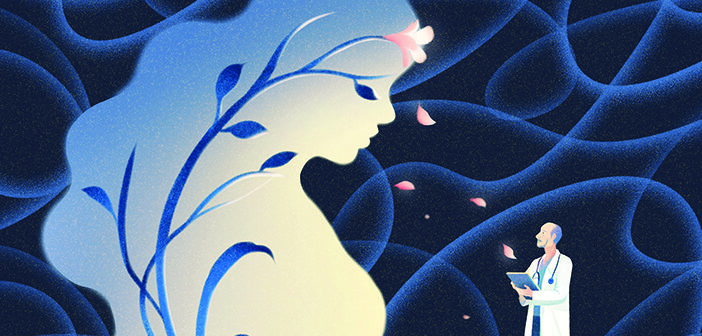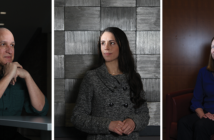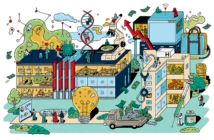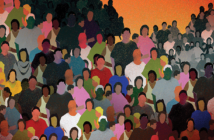Striving to do no unconscious harm.
Why do we think the way we do? Who are we, really?
Certain assumptions, mostly unrecognized, mold and shape our day-to-day lives. That is true for me, and for you. Not just assumptions, either, but our upbringing and experiences, our interplay with others, cultural trappings, all those countless “inputs” that our senses absorb from birth and our brains integrate into us, year after year, into a person, into me, and into you. Those neuronal connections, by the billions, most formed years ago and most unrecognized even at the time, make us who we are, how we perceive, why we act.
This subtle activity is an unfathomable work in process. Yet if the process is not easily discernible, the product itself may be scrutinized. This story is about one such product—me—and how I came to put myself under the microscope of self-analysis, and what I found when I looked inside. And how it changed me, a doctor.
One weekday morning my head nurse, Colleen, caught my eye as I looked up from the monitor for my next patient. She pointed with her right index finger, her thumb a trigger. “The big room, number five, the Johnstone family—again.” Colleen let out a puff of air. “She must need another note to be off work.” She said, too loudly, “What a scam.”
Rap, rap. My knuckles on the patient door announcing my arrival. I paused, gearing myself up for the expected: the smell of stale tobacco smoke from the mother, and the miasma of indigence from her three boys. I had seen the family several times before, and braced myself, pasting a smile on my face as I entered.
I was not wrong in my predictions, and tried not to react to the sights and smells. The boys, 6, 8, and 9, sat on exam tables with clear plastic masks over their faces. They inhaled vaporized, medicated air to clear their wheezing lungs, each with a small nebulizer machine humming away in front of them, already up and running according to protocol. The mother was in a chair, her bulky body spilling over the arm rests. Her shoulder-length, pale brown hair was unkempt and needed washing. Her clothes, like those of her boys, were faded from too many washings, torn in places, and stained with the grit of poverty.
Before I could even say hello, the mother stopped me, shaking her head and waving a hand in front of my face. “Don’t you say a word. A scam? A scam? Your nurse thinks this is a scam? I miss work, maybe get fired even though I have a note?” Her voice, shaky at first, gathered volume and conviction. “I’ve been a single mom for over six years, live in a crappy apartment with roaches and terrible ventilation, which the landlord never fixes, then the boys start wheezing and I have to bring them here. Where I get insulted? I don’t like to complain, but …”
I tuned out involuntarily. Still catching some of her words (“heat,” “dust,” “AC”), it occurred to me that I had no idea of how she lived, or the problems she faced. With other patients, I would usually have such basic info after a couple of visits. (“Scam,” “on my own,” “not easy.”) Why had I distanced myself from her? She began to wind down as I checked her boys, whose lungs were now clear. I turned off their machines, wrote the usual prescriptions for them, and handed them to their mother as I pulled up a stool and sat beside her. To listen. To hear.
She stopped talking and looked at me, with both a tight-jawed anger and, it seemed, an embarrassment that she had revealed things she preferred to keep private, probably from her boys, too. She talked. I listened and asked questions. We talked some more.
When we walked out of the exam room, she shook my hand. “Thank you,” she said. “Really.”
“Call the Habitat for Humanity number on that card,” I reminded her. “As I said, I’m on their board and I will let them know you will be calling for an appointment to apply for housing.” I said, “You and the boys will be expected to help with hammer and nails and whatnot when the time comes. It’s a long process but it’s worth it, though, so hang tough.”
“You know I can do that,” she said, as she shepherded her clan down the aisle, her head high.
DEEP-SEATED BIAS
Colleen, who had watched us shaking hands, sniffed the air and turned away, around a corner. Two techs who had been standing with her stared at me, their arms folded across their chests, a sense of disapproval in their manner. A look of—what, betrayal?—in their eyes. As if we had some unspoken partnership to keep so-called “white trash” at arm’s length.
What had been my role in this? Why had I not known more about their living situation? In retrospect, though I had taken proper medical care of them, I had interacted with them differently than with other patients. What was the reason for that, I wondered? A question that came to mind frequently over the following few weeks, and led me to examine myself.
There are many “others” out there and each of us has internalized the barriers and burdens of irrational assumptions about others. Our prejudices are mostly subconscious, hidden from our own awareness. Uncovering those deep-seated biases takes a willingness to self-examine, and a certain humility to accept yourself honestly.
Our national psyche has been challenged recently to understand and embrace previously marginalized people, such as the impoverished, among many others. If my personal insights are an indication, then change in societal attitudes may take place solely at the individual level. Only when each person looks to one’s “self” with openness, and courage, will any genuine change happen with respect to the understanding and acceptance of the “other.”




